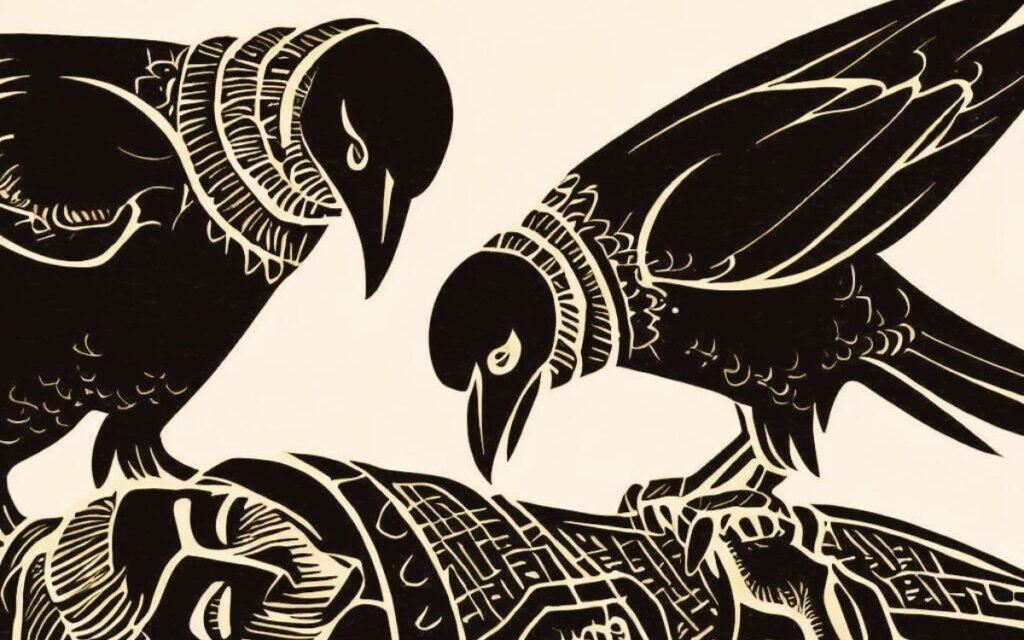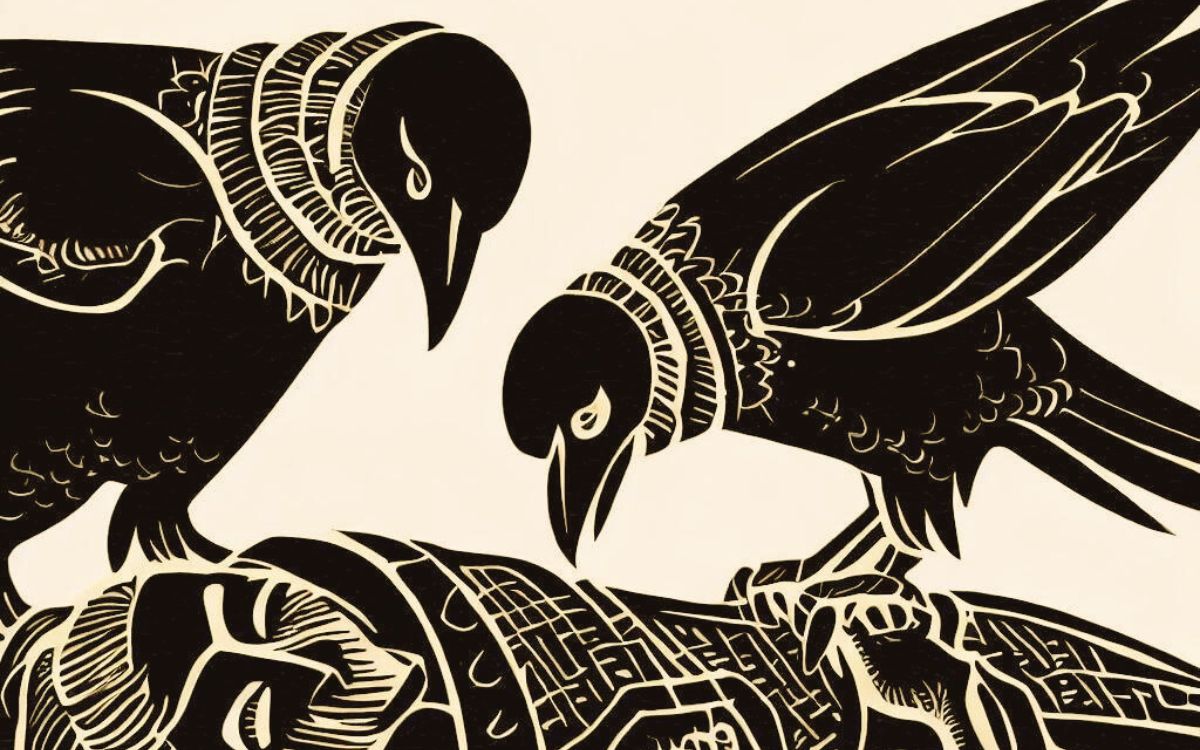Two Ravens is a haunting British folk song, continues to captivate listeners with its dark themes and timeless contemplation of death

Imagine a bleak, windswept moor. Two black ravens perch on a gnarled tree, their beady eyes glinting as they converse over a grim discovery.
Below them lies the body of a knight, fallen and forgotten, his only mourners the two scavengers debating which of them will feast upon his flesh first.
This chilling image is the heart of the traditional folk song Two Ravens (or Twa Corbies, in its Scottish form), a tale that has echoed across Britain’s green hills and grey coasts for centuries.
But what is it about this eerie ballad that has allowed it to survive for so long, creeping into our consciousness and lingering like a shadow at dusk?
Let us delve into the murky origins of Two Ravens and explore how its variations reflect the distinct cultural landscapes of the British Isles.
The Origins of Two Ravens
The earliest known versions of Two Ravens can be traced back to the Scottish Lowlands in the early 17th century.
The ballad, known there as “Twa Corbies”, presents a dialogue between two ravens contemplating their next meal.
In true Scottish fashion, it is blunt and brooding: they talk of how the knight has been abandoned by his hawk, his hound, and his lady love, leaving his body to the mercy of the wild.
The ravens delight in the feast awaiting them – his eyes, his flesh, his bones – and remark on the anonymity of death.
Without a friend or lover to mourn him, his demise will be but a whispered secret shared by carrion birds.
Across the border in England, the song morphs into “The Two Ravens”, with subtle but notable differences.
The English version retains the macabre dialogue, but it is tinged with a sense of melancholy rather than malice.
The ravens seem almost resigned, reflecting perhaps an English tradition of elegy, of mourning what has been lost.
In some renditions, there’s even a glimmer of hope as the knight’s loyal hawk and hound return to stand vigil, refusing to abandon their fallen master.
As the ballad travelled further afield, additional versions appeared in the far reaches of Britain – from the misty moors of Northumberland to the rugged coasts of Cornwall.
Each version tells the same basic story, but the local flavours seep in like peat smoke, colouring the narrative with regional quirks and dialects.
What remains consistent is the song’s chilling contemplation of death and the natural world’s stark indifference to human tragedy.
Of Birds and Battles
The enduring fascination with Two Ravens is no doubt partly due to its stark depiction of death – an unflinching look at the ultimate fate that awaits us all. Yet, there’s more lurking beneath the surface.
The imagery of ravens or crows fighting over the body of a fallen knight taps into deep veins of cultural symbolism.
In Celtic mythology, ravens are often associated with war, death, and the otherworld.
The Morrígan, an Irish war goddess, is said to take the form of a raven, flying over battlefields to claim the souls of the dead.
Ravens, in this context, become omens – heralds of doom that pick at the edges of the human realm.
Medieval Europe, too, had its own views on these dark birds. In many traditions, ravens were thought to be messengers between the earthly world and the afterlife.
The knights, who in these ballads die unknown and unburied, are often a symbol themselves – of a fallen warrior whose glory has faded, whose deeds have been forgotten.
It’s a stark reminder of the impermanence of fame and the inevitability of death.
But the two ravens’ discussion of their potential feast also speaks to a darker truth – that, in the end, death is not the noble passing we might imagine.
It is raw, physical, a return to the earth in the most literal sense. The body is meat, the eyes are juicy morsels, and the bones will be picked clean.
Why does this ancient song continue to resonate in our modern world? Perhaps it is because the themes it tackles are universal, transcending time and place.
The imagery of the ravens, the dead knight, and the indifferent world captures the essence of human vulnerability.
It tells a story that all can understand: a tale of loss, of being forgotten, of the ultimate fate that binds us all.
Modern interpretations have breathed new life into this old ballad.
Artists from Steeleye Span to Clannad have put their own spin on the haunting melody, while poets and writers continue to draw inspiration from its stark, evocative imagery.
Each version serves as a reminder that “Two Ravens” is more than just a song – it’s a story that invites us to look into the darkness and find meaning in its shadows.
So, the next time you hear the melancholy strains of Two Ravens drifting on the wind, pause and listen.
Somewhere in that haunting melody lies a message from the past, echoing across the ages, inviting you to reflect on the mysteries of life, death, and everything in between.
What did you think of this article about the haunting legacy of Two Ravens aka Twa Corbies? Share your thoughts in the comments section below!



